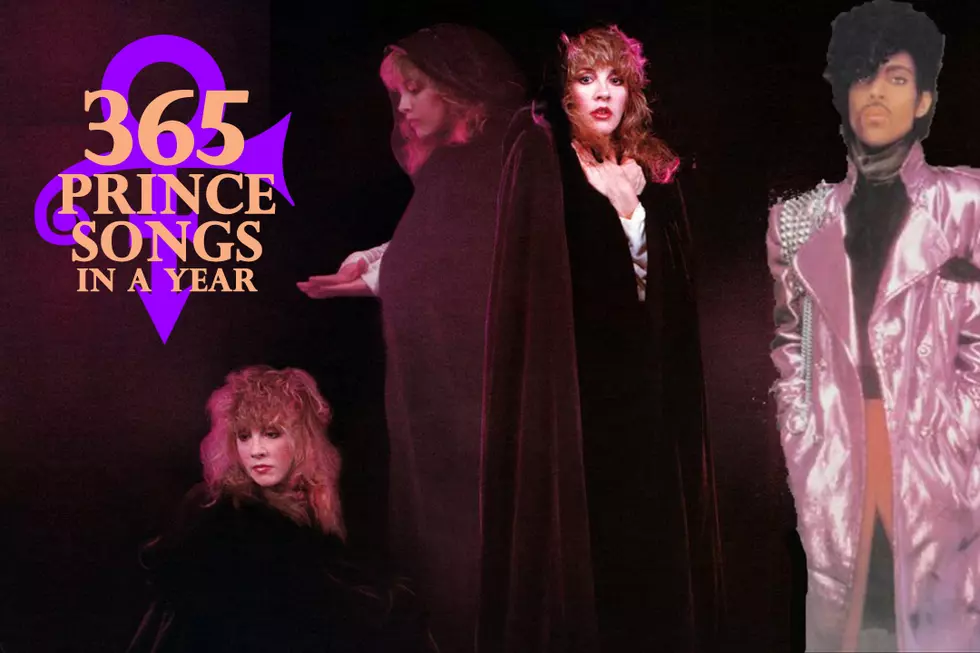
Prince Throws a Paisley Parade on ‘Pop Life': 365 Prince Songs in a Year
To celebrate the incredibly prolific, influential and diverse body of work left behind by Prince, we will be exploring a different song of his each day for an entire year with the series 365 Prince Songs in a Year.
Around the World in a Day was mostly recorded before Purple Rain made Prince one of the biggest stars in the world.
It's a significant distinction, because the success of that 1984 album had little bearing on the follow-up record, even though some songs were recorded after Prince and the Revolution's globe-conquering tour in support of Purple Rain slowed down.
But just as many songs that ended up on 1985's Around the World in a Day began life during the prolific Purple Rain sessions, and could have easily been slotted on that LP. Point is, the paisley-speckled psychedelia that runs through Around the World in a Day, a less commercial offering than its predecessor and therefore seen by some as a letdown after Purple Rain's massive popularity, was well in place for the creatively restless artist before his fortunes turned during the summer of 1984.
"Paisley Park," "Temptation" and Pop Life" were all originally recorded during the Purple Rain sessions but ended up on the next record. All hold a special place in the Prince pantheon -- "Paisley Park" for giving his studio and record company, which launched with Around the World in a Day, their name, and "Temptation" for bringing his sex-or-religion dilemma to an eight-minute climax -- but "Pop Life" is the highlight of the trio.
Prince and the Revolution recorded "Pop Life," maybe the most emblematic of Around the World in a Day's parade of throwbacks, in Hollywood in mid-February 1984, right after overdubs were added to "Another Lonely Christmas," which ended up as the B-side of "I Would Die 4 U." Seven months later, and after Purple Rain shot to No. 1 and made Prince one of the era's most popular artists, Revolution members Wendy Melvoin and Lisa Coleman supervised the overdubbing of strings onto the track.
Pretty uneventful stuff, as far as these things go. But a break a little after the song's three-minute mark has a more interesting history. Right at the part where Prince would come in with the relatively uneventful chorus ("Pop life / Everybody needs a thrill / Pop life / We all got a space to fill"), a bell rings like the ones used in boxing matches, and the sound of an agitated audience roars out of the speakers.
Listen closely among the scattered boos and you can hear someone yell, "Throw the bum out!" Rumors persisted for years that this was the real crowd that greeted the mostly unknown Prince when he opened for the Rolling Stones during an October 1981 tour stop in Los Angeles. He was booed offstage after racist and homophobic insults, along with bottles and other objects, were hurled his way. A second show two nights later didn't go much better, but he did manage to finish his short set this time.
Skip forward a couple years, and Prince had settled in the Top 10 with "Little Red Corvette," with "When Doves Cry" soon to lead the first of five singles to No. 1. The pop life was turning into the good life, and the break heard near the end of "Pop Life," the song, was his sweet revenge. Right? Nope.
It turns out the crowd noises and the "Throw the bum out!" line were from a sound effects library used by many recording artists (Prince has employed other samples from the same company on other songs) and filmmakers (the exact same boos and "bum" shout can be heard in the 1982 slasher pic Alone in the Dark) over the years.
No matter. The effect gives a sense of drama to the otherwise light pop tune that showed up on Side Two of Around the World in a Day. "Pop Life" -- which later received a dance-floor-worthy remix from Sheila E., who plays drums on the song -- is more musically interesting than it is lyrically, but the album is pretty much like that, splitting the difference among its nine tracks. Still, it's no surprise the song was chosen as the LP's second single, following its best song, "Raspberry Beret," which hit No. 2.
"Pop Life" made it to No. 7, and, along with the album's No. 1 showing, it secured Prince's spot as one of the decade's top artists. It also proved that even his simplest and seemingly most throwaway numbers had a way of creeping up on you in the end.
Prince: 40 Years of Photographs, 1977-2016
More From Diffuser.fm









